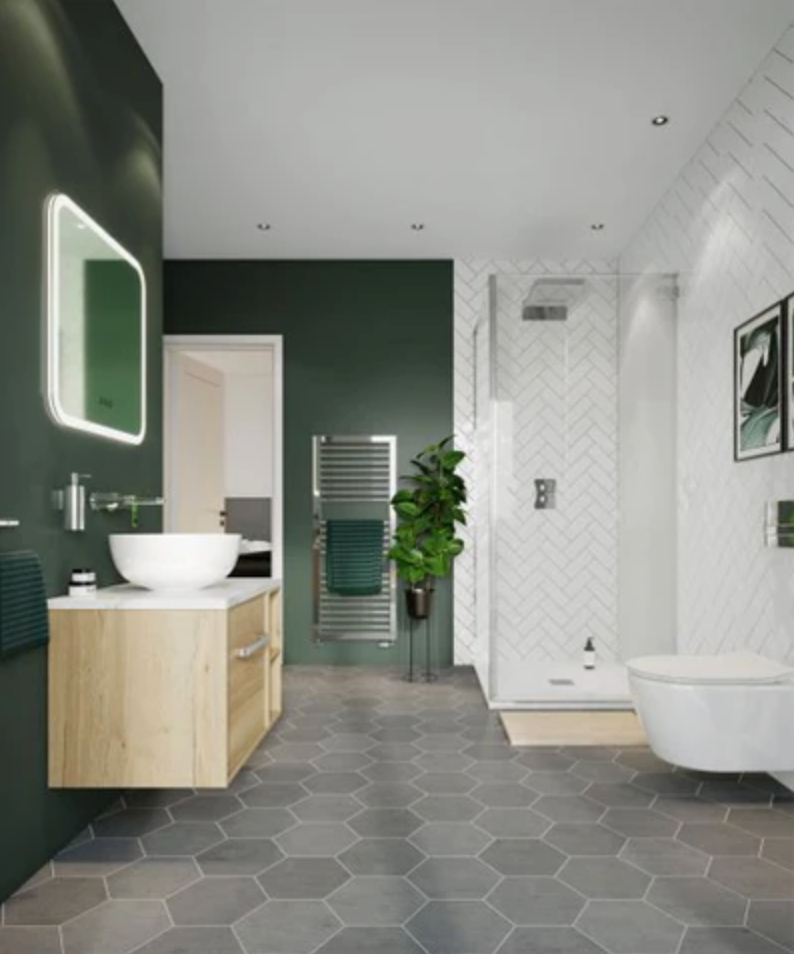Over the years, there has been a significant change in the range and sizes of tiles available in the market. Despite the numerous shifts in trends in the market, there has been one question that has stood the test of time - should the floor tiles be bigger than the wall tiles?
If you are going for a timeless aesthetic to your rooms, the right kind of tiles for both the floor and walls should be selected. A crucial fact and idea that should be considered before making any decisions is that most floor tiles available in the market can double up as wall tiles, but not the other way around. Depending on your design aesthetic and functional goal, the tiles you select must fulfil both the goals, and that is what will make all the difference.
Here are a few examples of how you can optimize your choice of tiles, especially when you want to create an illusion of a bigger room or even provide some depth to an already large room:
- Use larger floor tiles - Large format tiles usually have thinner grout lines and are required less due to the layout, which make the floor more streamlined and the room look more spacious. If you are including wall tiles, ensure that they are more proportionate in size of the room or smaller than the floor tiles.

A room with large format floor tiles and a mix of small and proportionate wall tiles
- Use light coloured tiles - Light toned shades of tiles reflect light, inherently creating an illusion of a larger room in contrast to dark toned shades which absorb light. Pictured below are cream colored floor tiles, paired with a white wall which creates the feeling of a large room. Wall tiles, as seen in this case, are not usually required.

Lighter colored tiles give depth and dimension to a small spaced room
- Monochromatic tile extravaganza - The use of the same tile for both the walls and floor creates an illusion of the room having more dimension. Note that the tile has to be of a neutral colour such as grey (pictured below) and both sections of tiles should be the same size.

- Combination of two contrast patterned tiles - Add a touch of elegance and space to your bathroom spaces with medium-sized honeycomb patterned floor tiles combined with thinner diagonally placed kitkat tiles on the wall. It brings out an aesthetic value to the wall along with spacing out the area. However, note that heavily patterned tiles will make the room a bit more cramped as it makes the room look more ‘busy’. Opt for more subtle and simpler patterns of tiles.

- Making large rooms cozy - Adding a mixture of dark and light colored tiles to a large room makes for a cozy look and a classy feel. A few tips for using dark coloured tiles are; one, very dark colored tiles for a monochromatic look should not be used as it gives the room a stuffy look and two, dark tiles are not recommended for smaller or narrow shaped rooms as it gives the room a more busy look.
In conclusion, any kind of tiles can be used to achieve the desired aesthetic that a person conjures in his mind. However, if their main aim is to make small spaces look bigger or to elevate narrow spaces, then floor tiles ought to be larger than the wall tiles. Otherwise, different sized tiles on both fronts, the colours and textures are used in works for the majority of living spaces.


